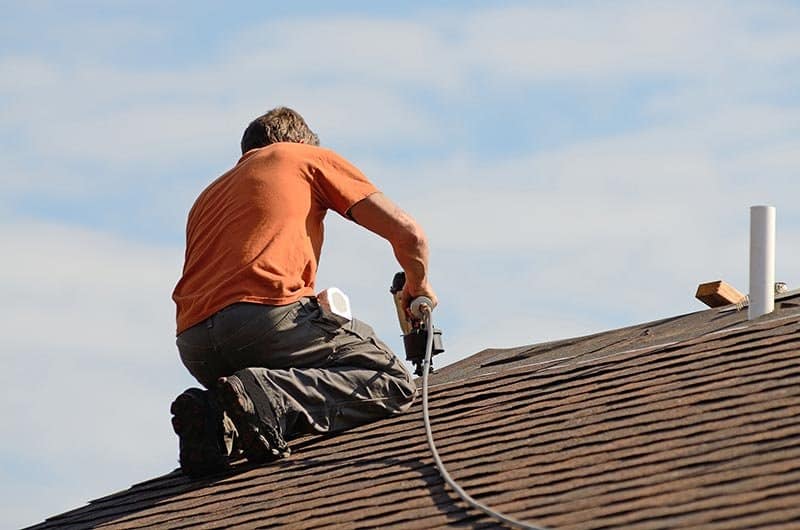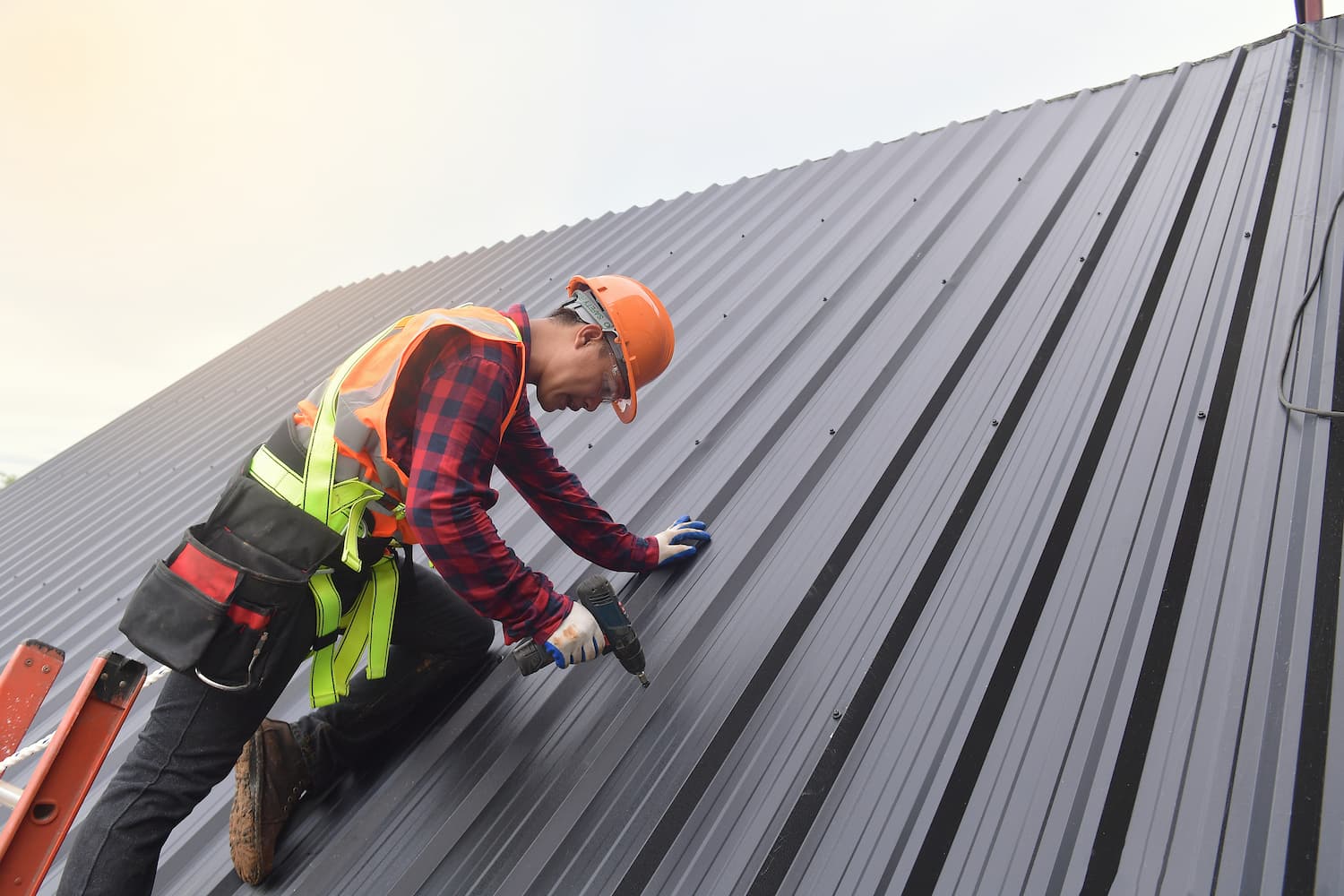Recognizing the Different Kinds of Roof and Their Advantages
Each roof kind-- from the affordability of asphalt shingles to the enduring toughness of metal and the timeless charm of floor tile-- provides distinctive advantages tailored to numerous needs and choices. As we check out these options further, a much deeper understanding of each roof type's special benefits might disclose surprising understandings that can impact your decision-making process significantly.
Asphalt Tiles
When considering roof alternatives, asphalt shingles usually become a prominent selection due to their balance of cost, longevity, and aesthetic charm (oahu roofing contractors). These roof shingles are made up of a fiberglass floor covering covered with asphalt and granules, giving a durable obstacle versus climate elements. Their lightweight nature permits easy installation, making them a preferred option for both contractors and property owners
Asphalt shingles are offered in two primary types: architectural and three-tab. Three-tab tiles are flatter and supply a more traditional appearance, while building roof shingles have a thicker structure and supply a dimensional appearance. Both types come in a range of designs and shades, enabling home owners to personalize their roof to match their home's design.
One of the vital benefits of asphalt roof shingles is their cost-effectiveness; they are typically less costly than other roofing products, such as floor tile or slate. Furthermore, they have a lifespan of approximately 15 to 30 years, relying on the high quality and maintenance. Additionally, many manufacturers supply service warranties that supply additional comfort. Overall, asphalt tiles stand for a useful and visually attractive roof solution for lots of domestic applications. honolulu roofing.
Metal Roof
Steel roof covering has acquired substantial appeal among house owners and contractors as a sturdy and energy-efficient option to typical materials like asphalt roof shingles. Consisting of products such as copper, aluminum, and steel, steel roofs are known for their durability, usually lasting 40 to 70 years with minimal maintenance. This excellent life-span significantly decreases the frequency of roofing substitutes, equating to lasting price savings.
Among the essential advantages of metal roof is its energy effectiveness. Steel mirrors solar convected heat, which can assist reduced air conditioning expenses in warmer environments. Additionally, several steel roof products are produced with recycled materials, making them an eco-friendly selection.
Metal roofing systems are likewise very resistant to serious weather, including high winds, hefty rain, and snow. This strength decreases the danger of leakages and other damage, giving assurance to home owners. In addition, steel roof is available in various designs, colors, and finishes, permitting for modification to match any building style.
While the initial financial investment may be more than typical roof options, the lasting benefits of resilience, power effectiveness, and reduced maintenance make steel roofing a beneficial consideration for contemporary homes.
Tile Roof Covering
Tile roof covering supplies house owners an unique aesthetic and extraordinary durability, making it a preferred choice for different building styles, especially in warmer climates. This roof product is available in a range of forms, materials, and colors, consisting of clay and concrete, allowing for flexible style alternatives that can improve a home's visual allure.
One of the primary advantages of ceramic tile roof covering is its longevity. With appropriate upkeep, floor tile roofs can last upwards of 50 years or more, exceeding several various other roof covering materials.
Another benefit of floor tile roof is its low maintenance requirements. While installation can be more pricey contrasted to various other roof types, the financial investment is often justified by the long-term financial savings on replacements and fixings. Tile roof covering is eco friendly, as several ceramic tiles are made from natural products and are recyclable at the end of their life cycle.
Wood Shingles and Shakes
Timber shingles and drinks offer an all-natural appeal and warmth that can enhance the visual of any type of home, making them a popular selection among property owners that appreciate natural directory materials. These roof options are commonly made from cedar, redwood, or ache, giving a rustic charm that enhances various building styles.

Timber shingles are machine-cut, using a consistent appearance and smooth surface. On the other hand, shakes are hand-split, causing a more irregular and distinctive appearance. This distinction can influence the general layout and character of a home, with shakes commonly offering a more rugged, all-natural feeling.
Among the primary advantages of wood roof is its exceptional insulation residential properties, which can aid control indoor temperature levels while reducing power costs. Furthermore, wood tiles and trembles can be treated with fire resistants and preservatives to boost their sturdiness and resistance to decay, pests, and wetness.
Nevertheless, it is vital to consider the upkeep demands related to wood roofing. Regular assessments, cleansing, and treatment are necessary to prolong its lifespan. When appropriately cared for, wood roof shingles and trembles can give a long-lasting and stunning roof remedy that raises any building's aesthetic allure.
Eco-Friendly Roof Options
As environmental recognition expands, home owners are significantly seeking environmentally friendly roofing alternatives that not only decrease their carbon impact but additionally add to lasting living. honolulu roofing. These roof covering remedies are created to decrease ecological effect while enhancing power effectiveness and sturdiness
One preferred option is metal roof covering, which is frequently made from recycled materials and boasts a long life-span, reducing the requirement for regular substitutes. Metal roofings show solar warm, thus roofing contractors oahu reducing power prices. One more practical option is rubber roof, commonly made from recycled tires, using outstanding insulation and resilience.
Eco-friendly roofings, which include vegetation and soil, offer natural insulation, aid with stormwater management, and boost air quality. They are specifically helpful in urban locations, assisting to mitigate the warmth island result. Furthermore, solar ceramic tiles are gaining grip; they incorporate typical roof covering products with solar innovation, enabling house owners to produce their own electrical power while preserving aesthetic why not check here appeal.

Conclusion
Asphalt shingles provide an economical choice with modest sturdiness, while metal roof offers outstanding longevity and energy performance. Ceramic tile roof covering stands out for its aesthetic charm and resilience, and timber roof shingles boost insulation but need diligent maintenance.
